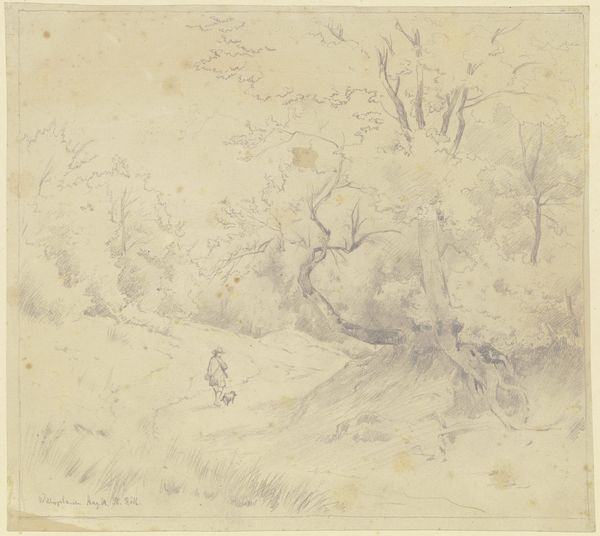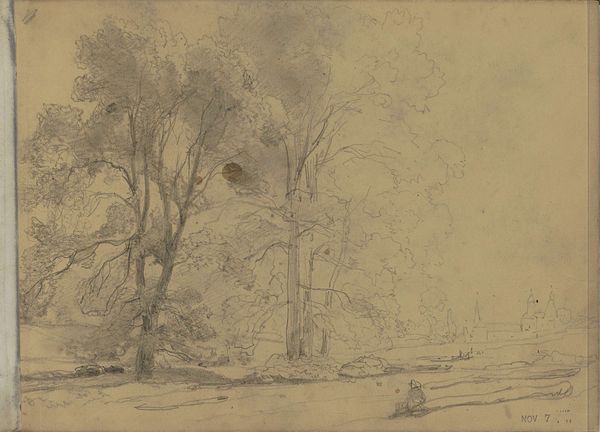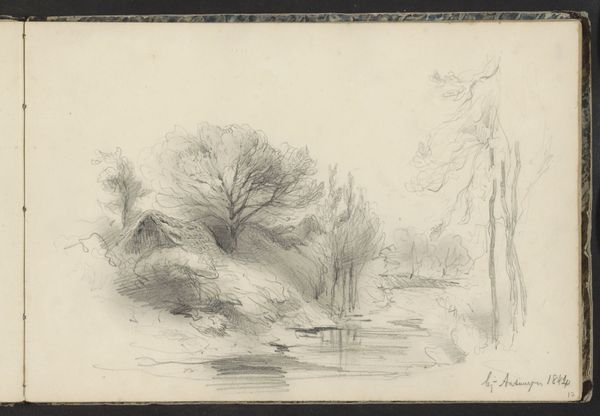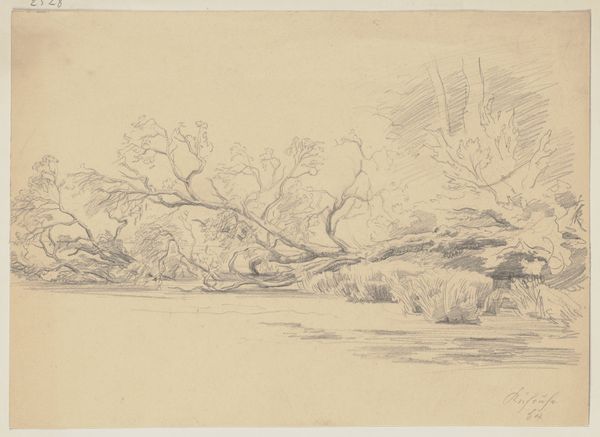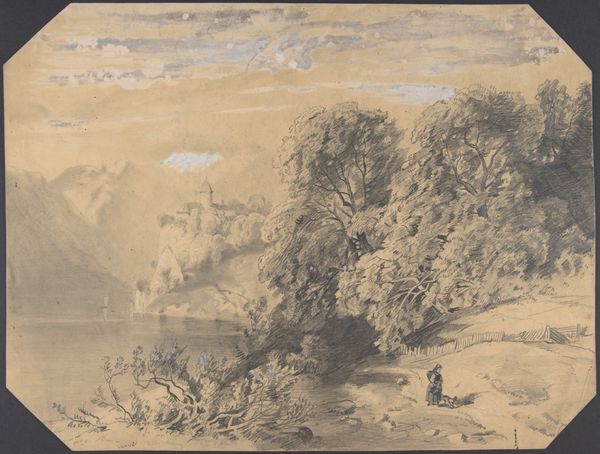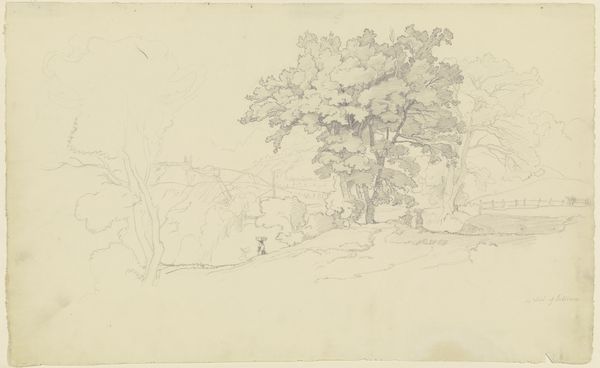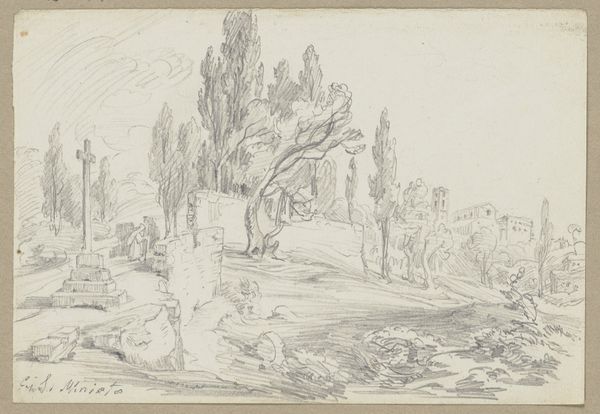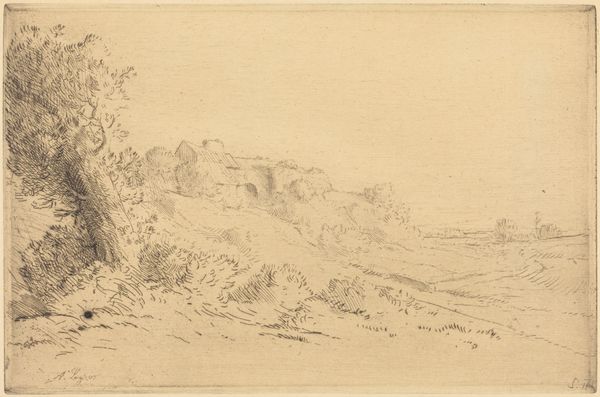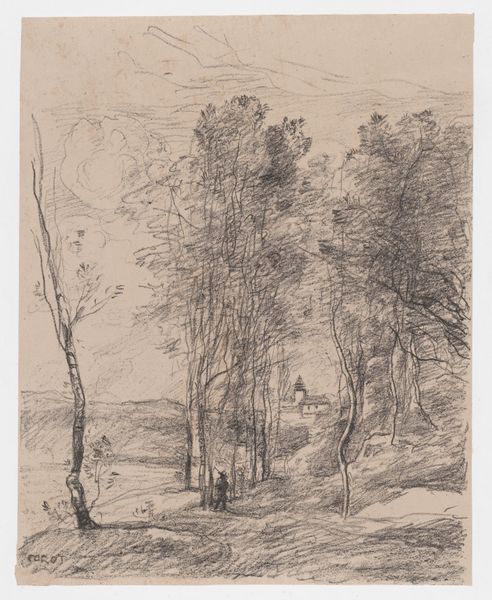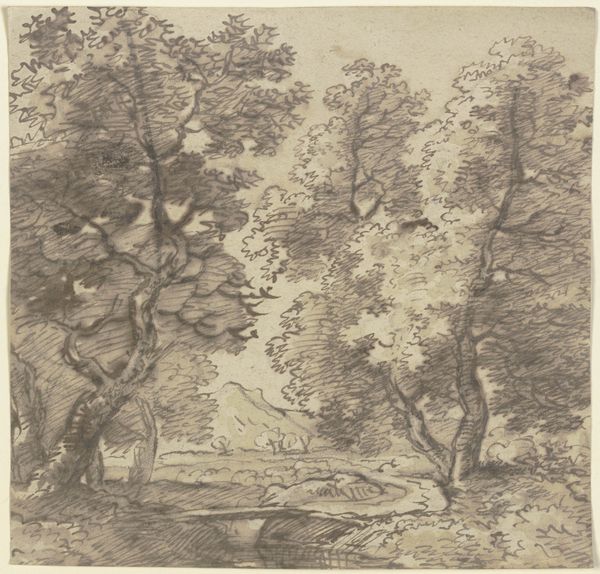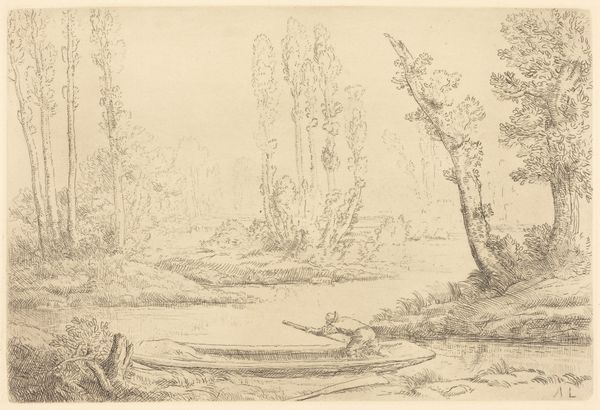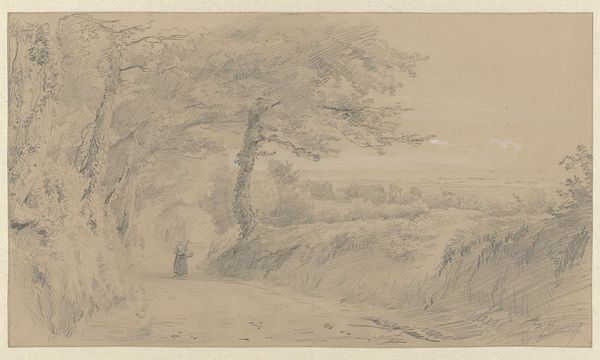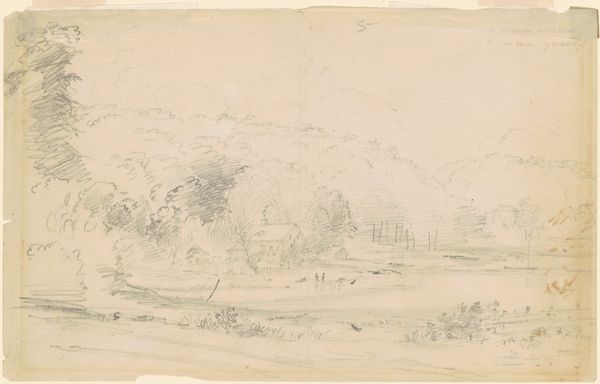
Copyright: Public Domain
Curator: "Ruhende Frau unter Pappeln am Fluß", or "Resting Woman under Poplars by the River," crafted by Camille Corot in 1866. It is rendered in pencil, capturing a plein-air moment. Editor: It has such a wistful feeling, doesn't it? A solitude evoked through these soft pencil lines...it makes me consider her inner thoughts. Curator: Corot often explored the interplay between figure and landscape, deeply influenced by Romanticism and its notions of an individual’s experience within the natural world. This particular drawing resides in the Städel Museum, contextualized within a collection heavily shaped by 19th-century artistic movements. Editor: What I appreciate is how the "resting woman" is positioned just at the base of the poplar tree, emphasizing the tree's strong upright stance and creating a sheltered intimacy. How does the context of the Städel Museum shape our view of this work? Curator: The Städel’s historical emphasis on academic training might initially present Corot as simply reinforcing classical landscape traditions, yet his loose, suggestive linework also suggests emerging avant-garde interests that would eventually lead toward impressionism. Editor: That balance is palpable. What do you make of her positioning relative to the water? There is some ambiguity here. Is the river a sign of transience? Or is the depiction intended to offer solace? I keep finding myself drawn to that open space, her place of quiet respite, as it sits in opposition to the heavier drawn foliage on either side. Curator: Such spatial tensions contribute to its overall effectiveness, but also remind us how gendered roles are constructed in images of leisure during this period. Woman, nature, receptivity. The drawing engages with a public imagery around bourgeoise norms that had an important role in French society. Editor: I suppose seeing it that way encourages an important debate surrounding leisure and artistic representation within this particular timeframe. The artwork asks viewers, then and now, to interpret its figures with historical awareness. Curator: It’s precisely the blend of the intimate and the broadly social that holds its significance. The drawing is less about the river bank, perhaps, and more a visual object entangled in historical perceptions. Editor: Thank you for that context; viewing "Ruhende Frau unter Pappeln am Fluß" through a lens of intersectional identities and the politics surrounding these images allows the piece to resonate on several crucial cultural layers.
Comments
No comments
Be the first to comment and join the conversation on the ultimate creative platform.

